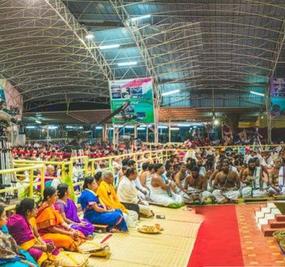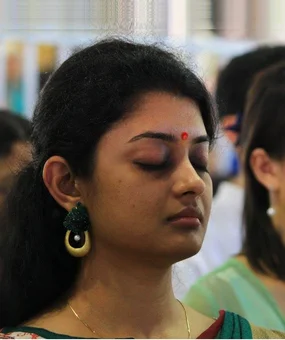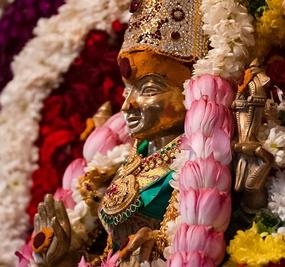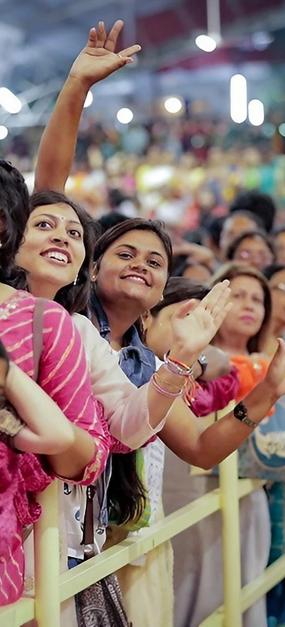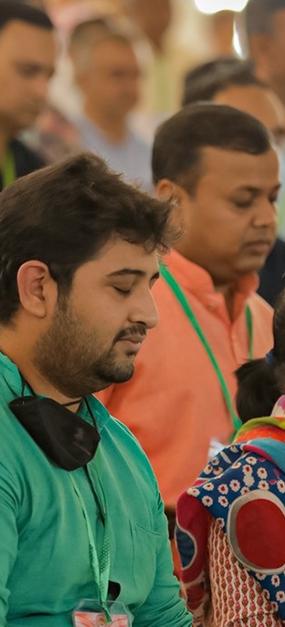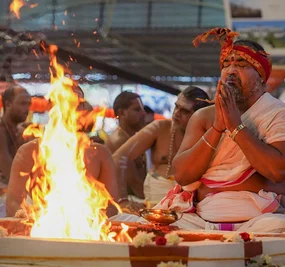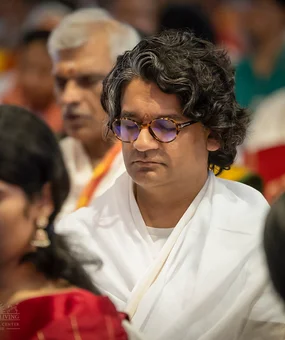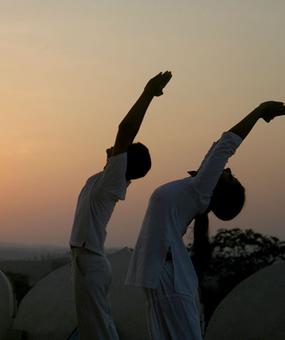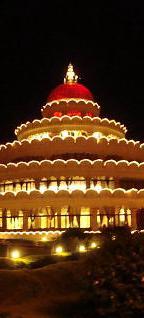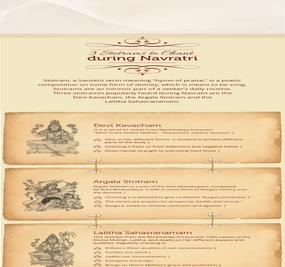Ratri (night) is that which gives peace and rest. Just like we rest at night every day, in the same way, twice a year, there is a tradition of taking deep rest by going deep into meditation and rejuvenating our being. And this is usually done during the Chaitra (March-April) and Ashwin (September-October) months of the lunar calendar.
The solstice is the time when the moon is at one extreme, but Navratri (nine nights) is the time when the moon is more centered. That’s when we’re able to go deeper into meditation and experience deep rest (as the position of the moon has an impact on our mind). That’s the main theme of Navratri. So, to experience this rest, the tradition is to perform all the different pujas, Yagnas (Homas), and spiritual practices, such as meditation and chanting, in honor of the Mother Divine.
To enhance the benefits of the spiritual practices performed by each individual during Navratri, there is a tradition of performing Yagnas (also called Homas). It is believed that when we do any practice in a group, the benefits are multiplied and obtained faster. So when everyone joins together and does meditation, the group consciousness has the power to elevate you faster. So Navratri is the time when everyone comes together and participates in Yagnas.
What are Yagnas?
Yagnas are an ancient science that works on purifying the environment, the individual, and the subtle level of consciousness. They are done to nullify negativity, and to create more positivity.
The Divine is nothing but a form of energy. A pure and highly vibrant energy. Through the technique of a Yagna, this energy (which is highly pure and vibrant) is brought down from the subtle to the gross using the five elements, Mantras (chants) and Yantras (diagrams). When this pure energy touches the Earth element, it has a purifying effect on the physical atmosphere, the subtle atmosphere and on the people who participate in the Yagna.
A Yagna has three aspects:
- Deva Puja (worship): Acknowledging and honoring all the different attributes of the Divine.
- Sangatikarana (unification): Hastening the process of evolution by bringing together all the elements (Air, Water, Fire, Earth, Ether) of creation.
- Dana (to give): Sharing what one has been blessed with.
These three combine to form a Yagna.
There are different Yagnas for health, happiness, progress, removing obstacles in life, etc. In a Yagna, many different things are done in a specifically designated manner to produce a definite effect.
When groups of people sing devotional songs together, or meditate together, or chant together, then too it is called a Yagna, as coming together in prayer creates a field of harmony (sattva), which is similar to the effect of Yagnas, and this is most needed in the world today.
The science behind Yagnas
If you open a transistor you will find a circuit diagram on a piece of metal chip. Our cell phone chips have this too. In the same way, there are certain diagrams which are there in this universe for energy to move. The ancient people knew this and they called these diagrams Yantras.
I will give you an example. If you sit in front of a computer and listen to a sound recording, you see that the sound has produced certain diagrams, isn’t it. In a computer, the sound produces certain diagrams so that energy moves in specific patterns. Now these patters in the ancient times were made into diagrams, which are called Yantras.
So Yantras are geometrical figures and are a very important part of any Yagna. When used along with the five elements (Earth, Water, Fire, Air, Ether), through specific sounds and rituals, they activate certain energies in the atmosphere which purifies the subtle atmosphere from negative energy and infuses positivity.
People throw negative thoughts and negative emotions and that has to dissolve and disappear somewhere, and that’s when they use these Yantras (energy diagrams), Mantras (chants) and Tantras (techniques) in the Yagnas.




